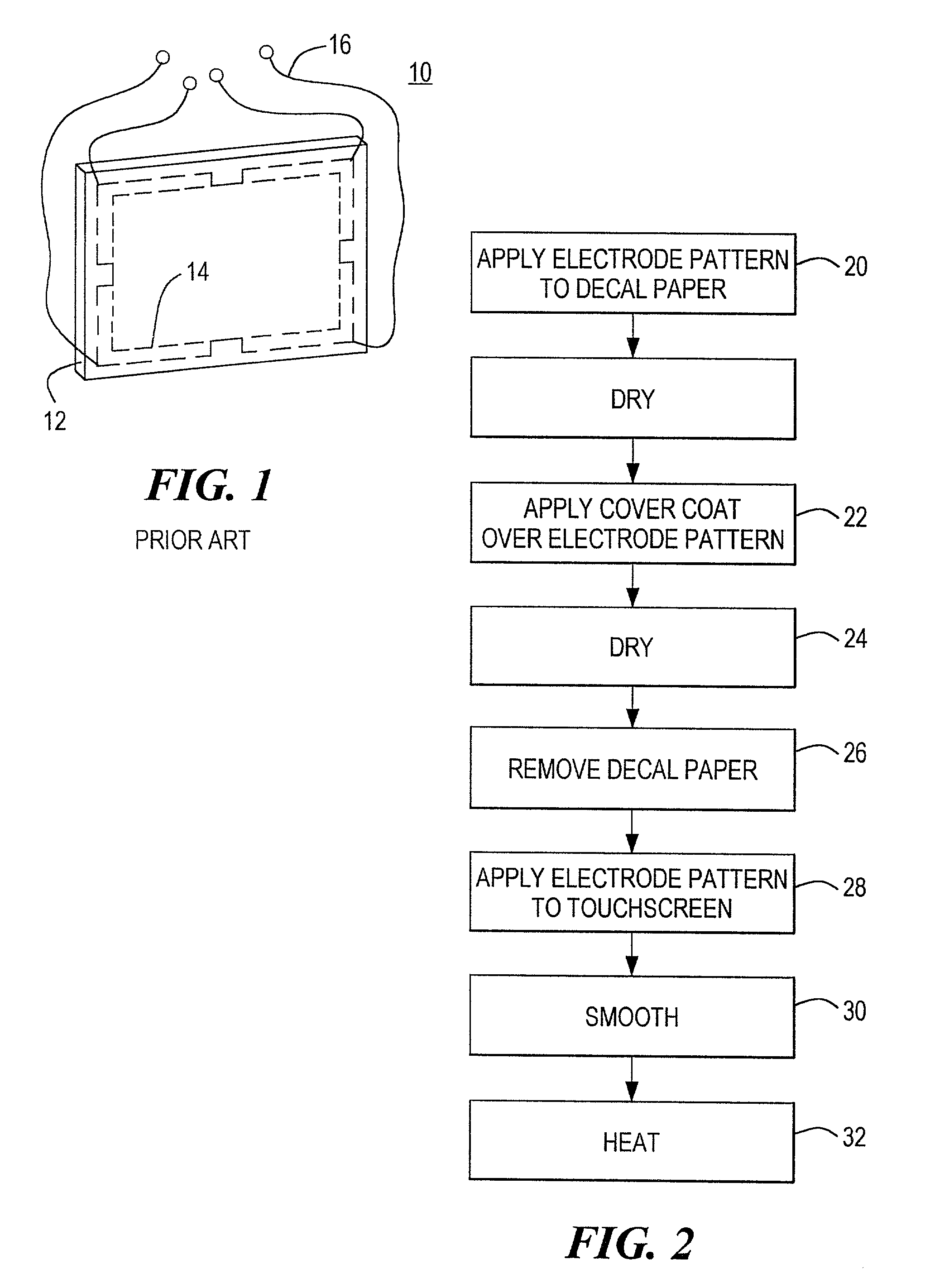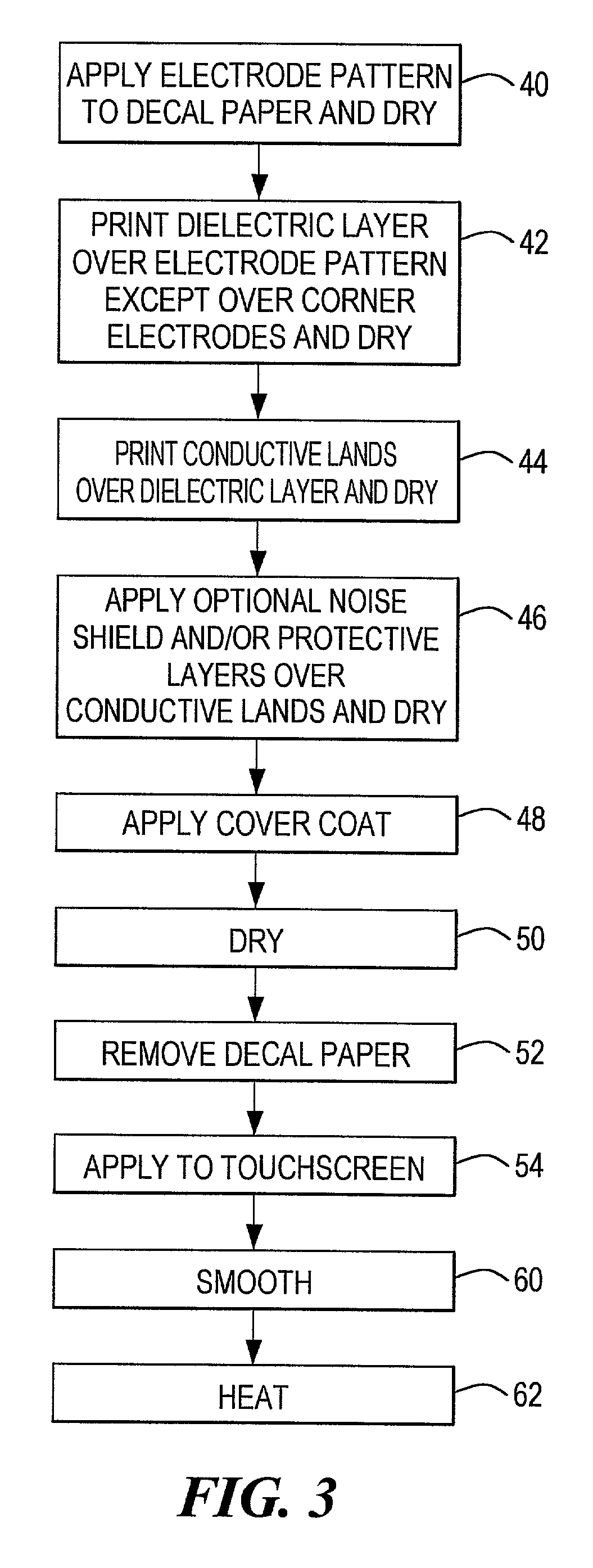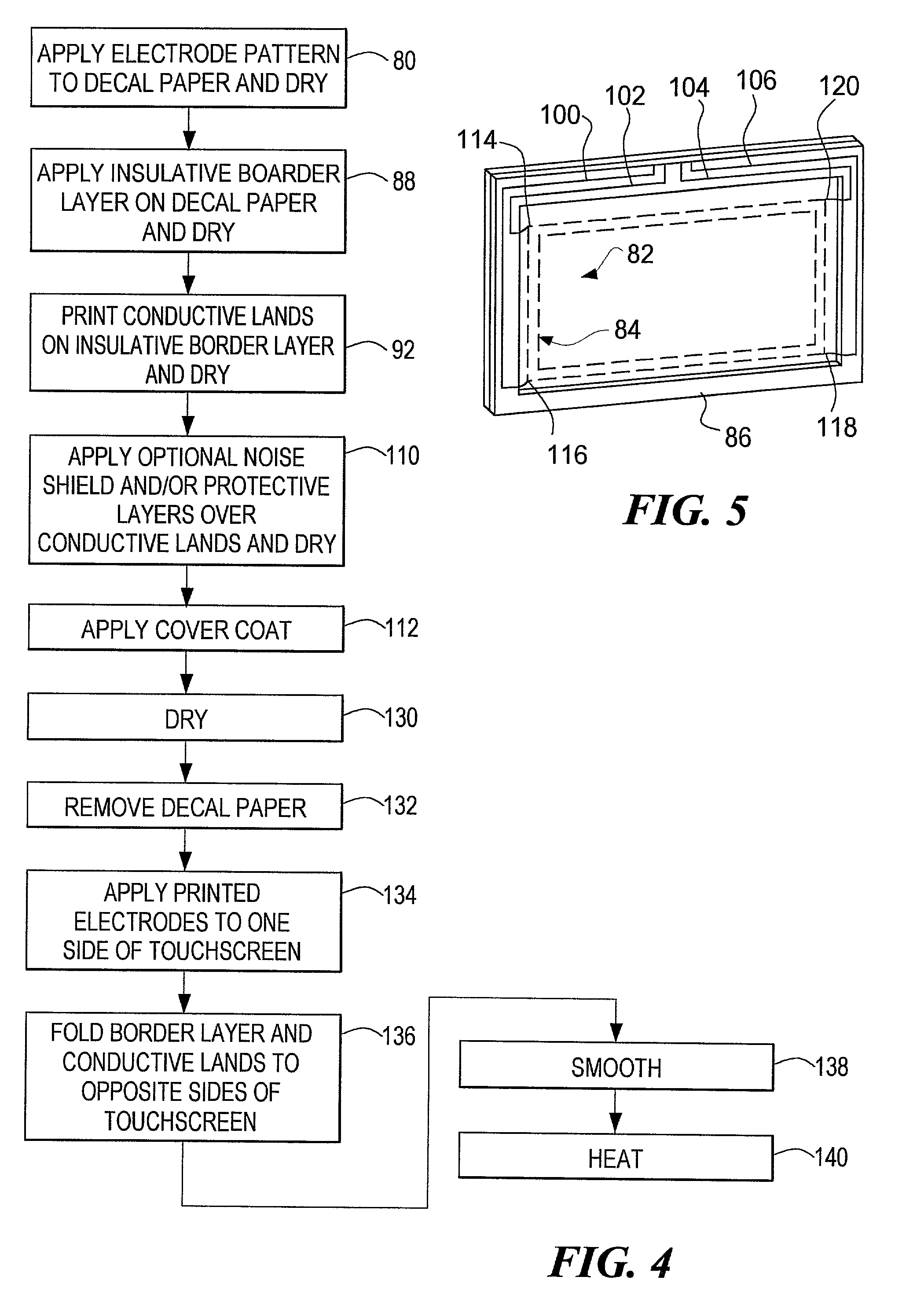Touch screen with an applied edge electrode pattern
a touch screen and edge electrode technology, applied in the field of touch screen panels, can solve the problems of printing defects, non-flat or curved glass substrates, and non-uniform thickness of printed ink, and achieve the effects of reducing the cost of manufacturing touch screen panels, reducing printing defects, and improving touch screen quality
- Summary
- Abstract
- Description
- Claims
- Application Information
AI Technical Summary
Benefits of technology
Problems solved by technology
Method used
Image
Examples
Embodiment Construction
[0042] Touch screen panel 10, FIG. 1, typically includes a glass substrate 12 coated with a resistive layer such as tin oxide upon which are deposited edge electrodes 14 usually by screen printing as discussed for example in U.S. Pat. No. 4,198,539. Wires 16 are each connected to a different corner electrode of pattern 14 as shown. As discussed in the Background of the Invention above, these wires are typically taped to the edges of panel 10. In some embodiments, an insulative layer is disposed in a border configuration around the perimeter of panel 10 over edge electrode pattern 14 between edge electrode pattern 14 and wires 16 and in still other embodiments, a conductive noise shield layer and possibly a protective layer may be disposed over the insulative layer. A noise shield border layer may also be screen printed peripherally on the back of the touch screen panel shown in FIG. 1.
[0043] As discussed in the Background of the Invention above, when the touch screen panel is curved...
PUM
| Property | Measurement | Unit |
|---|---|---|
| temperature | aaaaa | aaaaa |
| temperature | aaaaa | aaaaa |
| thick | aaaaa | aaaaa |
Abstract
Description
Claims
Application Information
 Login to View More
Login to View More - R&D
- Intellectual Property
- Life Sciences
- Materials
- Tech Scout
- Unparalleled Data Quality
- Higher Quality Content
- 60% Fewer Hallucinations
Browse by: Latest US Patents, China's latest patents, Technical Efficacy Thesaurus, Application Domain, Technology Topic, Popular Technical Reports.
© 2025 PatSnap. All rights reserved.Legal|Privacy policy|Modern Slavery Act Transparency Statement|Sitemap|About US| Contact US: help@patsnap.com



